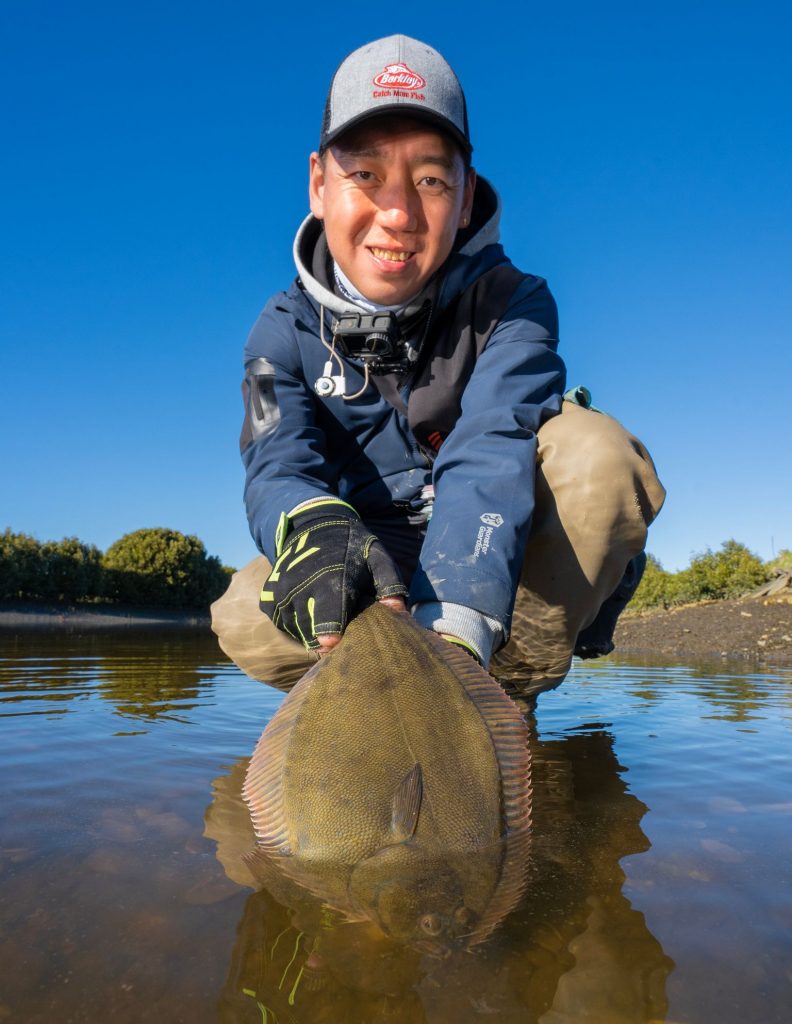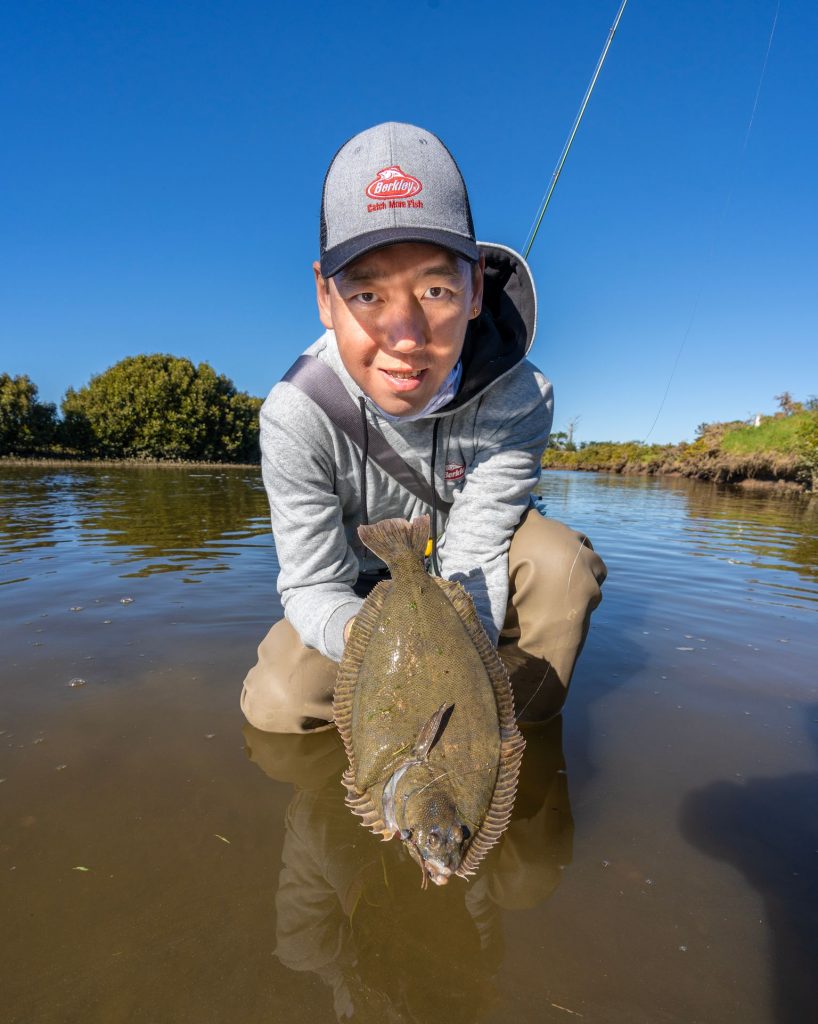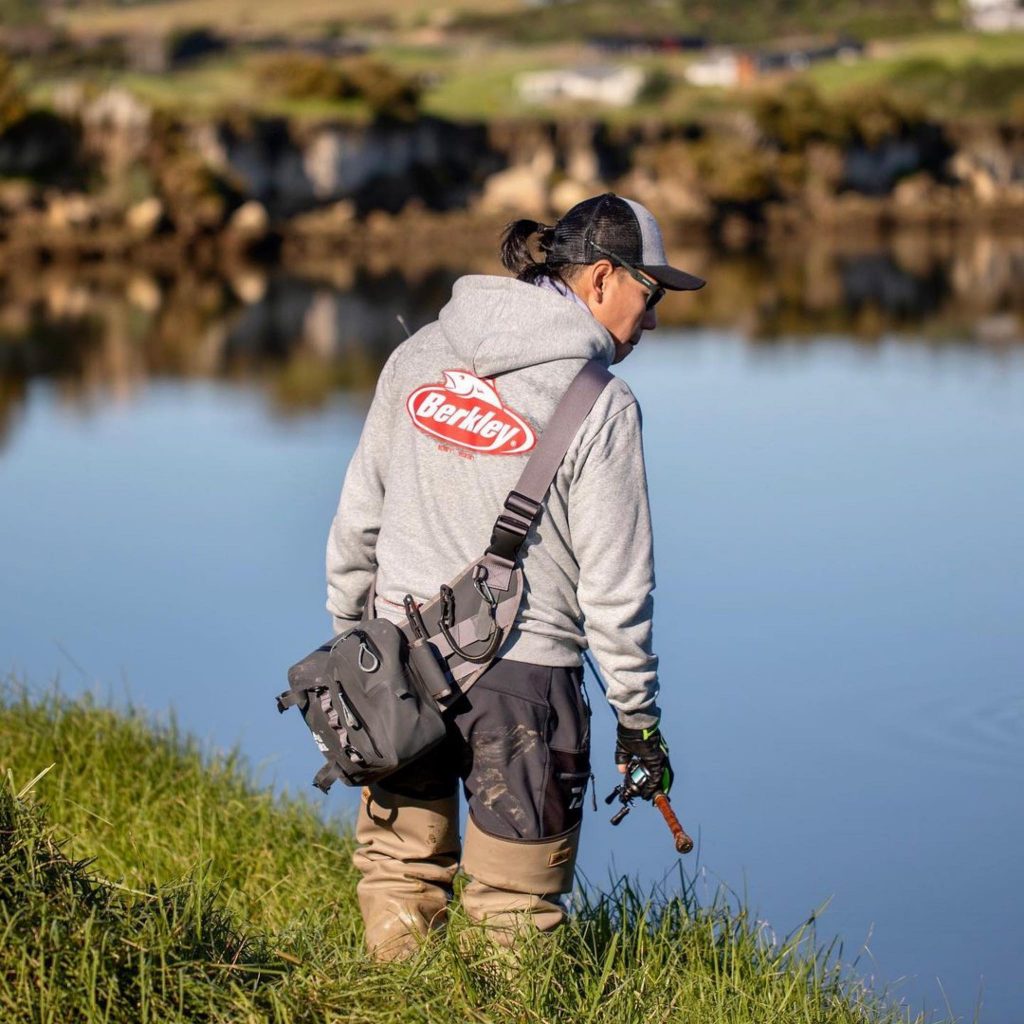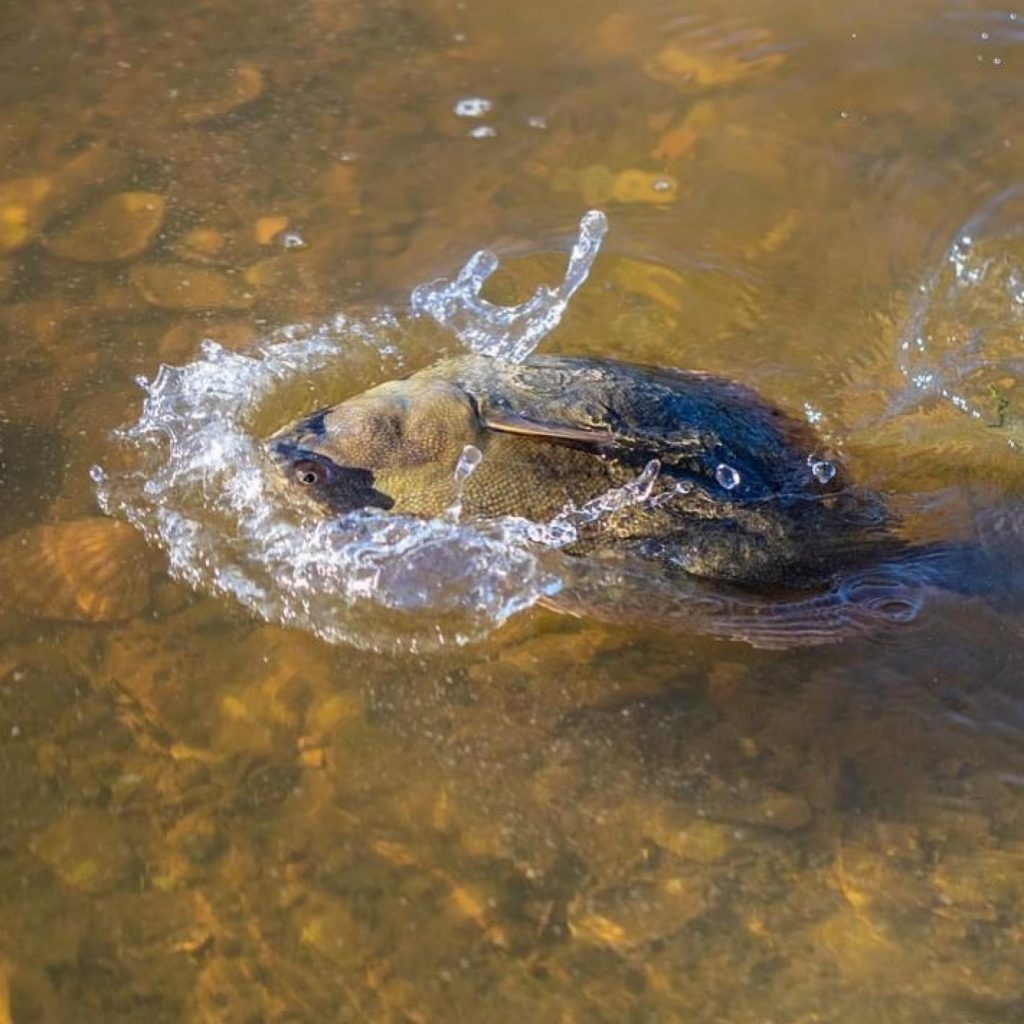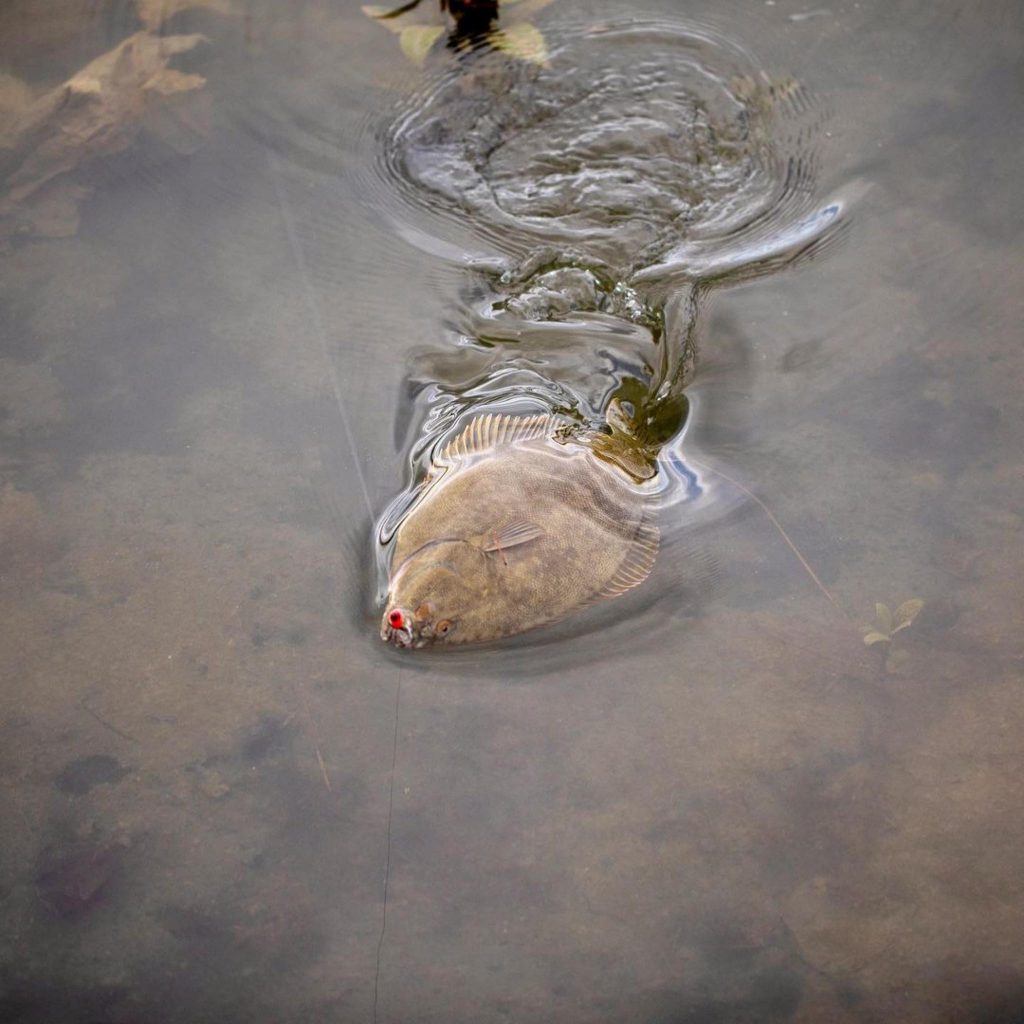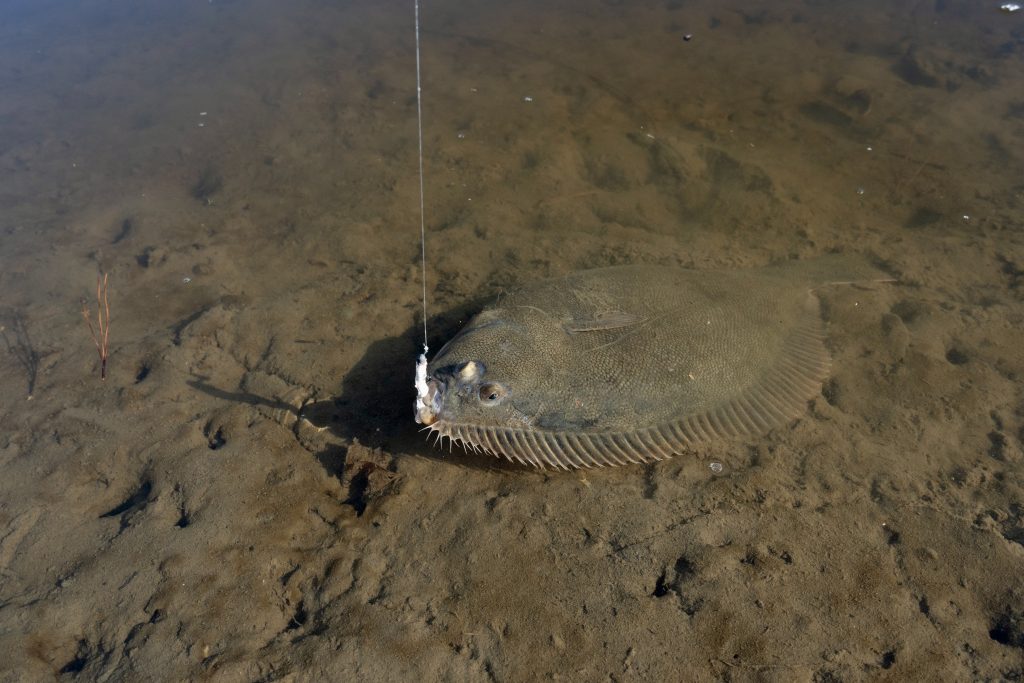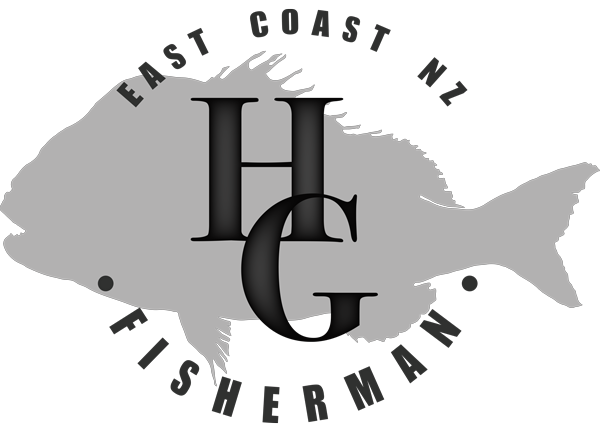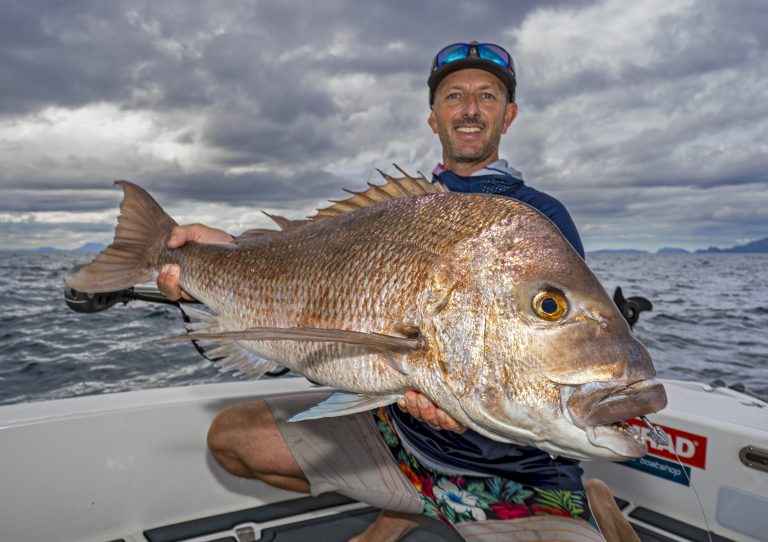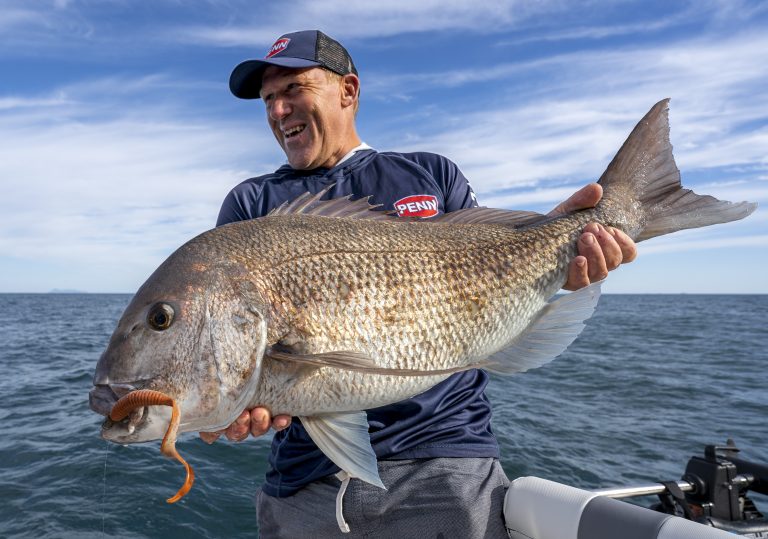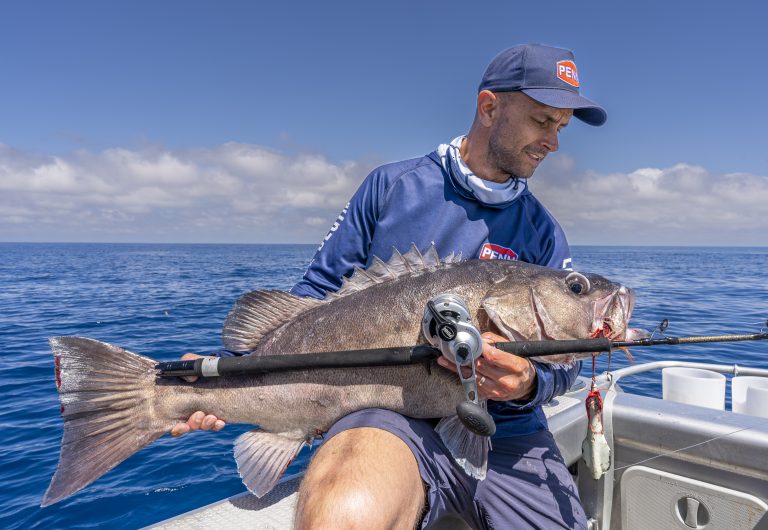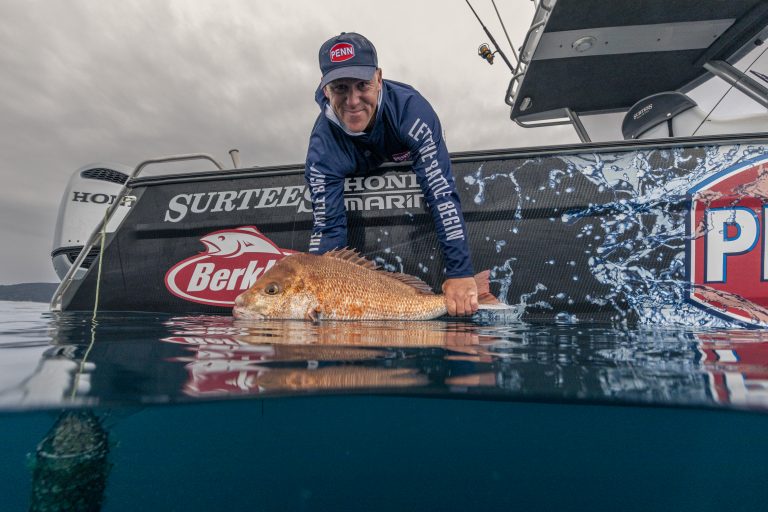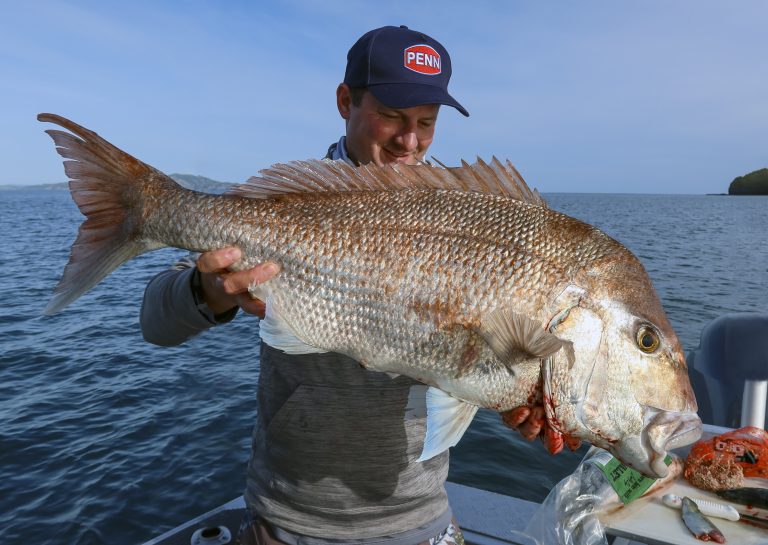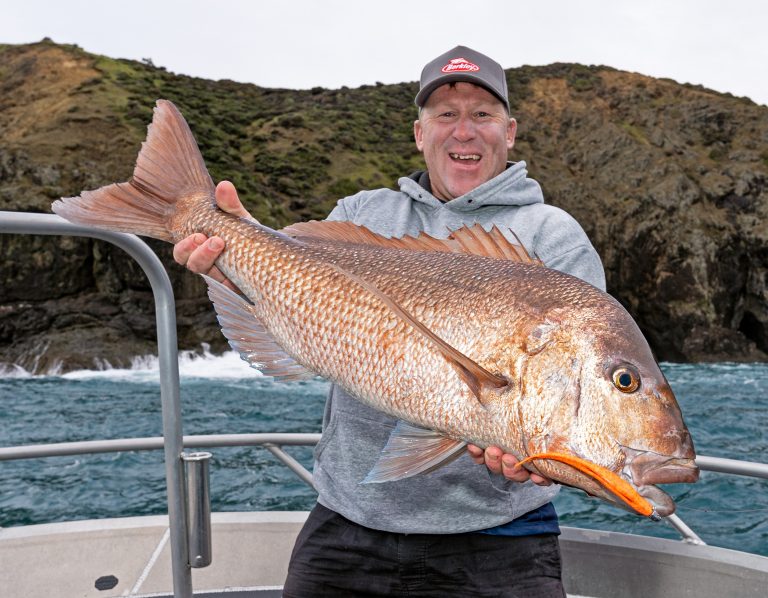I caught up with fishing buddy Albert Liyu to sight cast at flounder on a rising tide.
The art of catching flounder is quite similar to stalking trout in the wild – see flounder from a distance, approach with stealth, cast lure at flounder and then hook said flounder. The moment I saw the first one, was akin to seeing my first crayfish underwater. A lot of excitement and raised heartbeat. Then boom, in a flash, the flounder had spotted us from 4 metres away and was gone a puff of sand. Under Alberts experienced guidance, he said crouch low and wait for it to return. Sure enough, the flounder returned within a few mins to within 6 feet of the riverbank. Albert then presented the Powerbait within a metre of the fish and gently and oh so slowly, the lit-up flounder stalked the lure like a cat. Slowly at first and then as it got near the lure, the fish came in hot and smashed the bait! Wow!! Albert expertly flicked the fish onto the bank and although well legal – he was keen to release this fish in favour of a larger one. Any doubts I had about catching flounder on rod and reel, well and truly went out the window after watching this process. That morning we stalked six flounder and managed to catch two fish. Albert indicated this was quite slow, with catching 5-6 fish normal and if it’s hot. up to 10 fish is not out of the question.
To fish for flounder, you’ll need ultra-light tackle. We were fishing specialist Abu Garcia rods from Japan with bait cast reels – the rods are not yet available in NZ. However, we have a canal fishery, which provides rods capable of casting weights in the 1–3-gram range which is the weight of jig heads we will be using. The rods are a bit long at 8-9 feet, as you are only casting 4 -5 metres at the most, often less. Fitted with the appropriate 1000-2500 size spin reel and you are in business. Braid strength is not critical, but anything thin and 8-10lb is fine. Leaders are where we get a little more serious and fluorocarbon in the 6-8lb range is perfect, with no more than 10lb at the max.
Jig Heads – small is the ticket and we use Berkley Nitro Bream in the 1-3gm size range. Ultra-sharp, strong and most importantly the right size for the job.
Soft baits are the key ingredient and we have found Berkley Power baits & Gulp get the most bites.
NZ is full of harbours and estuaries with flounder in them. From Parenga in the North to the Bluff at the bottom of the South. Flounder abound in NZ, so it’s about time we started fishing for them. You will find flounder or variants of them on open sand beaches/harbours to far up estuaries to where the freshwater meets salt. Depending on your location, the yellowbelly flounder is probably the one you are most likely to encounter and for this article, this is the species we will focus on. You will need to find a muddy bottom with an ample crab supply. Muddier the better. This is where it gets tricky, however, as walking in mud is difficult and potentially slightly dangerous. So, you need to find a location – think the upper reaches of a harbour – that has easy fishing access without venturing onto the mud. Also, if you are clambering around in the mud, the only thing you are going to do is scare the flounder away. Having a grass bank (Often overgrown) is the perfect vantage point to stalk and cast at flounder. To be clear, this style is 100% sight fishing – spot the flounder in the water, get into a casting position, cast your soft bait within range of the fish and slowly retrieve and you should be rewarded. By slowly retrieve, we mean ultra-slow. Albert recommends not even winding just slowly moving the rod back with the tiniest of twitches to give the soft bait some action. if in doubt go slower.
Forget nighttime flounder missions! This is a daytime activity. There are some requirements, however. The first is no wind. As any wind will make ripples on the water and in turn make the flounder hard to see. Polarized glasses are a must-have. The incoming tide is what you need as the flounder creep up on the banks to eat food that pops up out of their holes on a rising tide. The first trickle of water down a crab hole is all the invitation a crab needs to venture outside. All the flounder we sighted were either swimming in a foot of water or gently sitting on the bottom waiting for prey. On the rising tide, flounder are in hunting mode, and they are very cagey, with outstanding eyesight. The higher the sun, the better the water visibility, so the time of day doesn’t matter other than the higher the sun, the easier it is to spot. You just obviously must have an incoming tide. One key aspect to this, is the tide table will indicate the tide at the entrance point and the low tide could easily be an hour later or more, further up the estuary. So, some local knowledge is a big help and will save some waiting around.
Sight casting for flounder is very much a fishery in its infancy and we are only scratching the potential of what is on offer from these succulent harbour dwellers.
